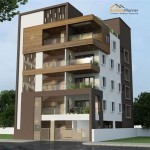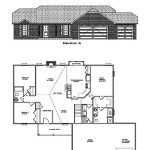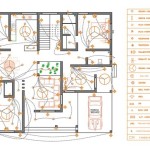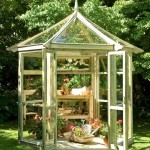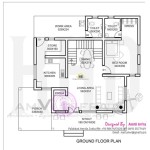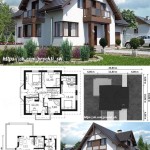Smart Small House Plans: Maximizing Space and Efficiency
Smart small house plans prioritize functionality and livability within a compact footprint. They leverage clever design strategies to create homes that feel spacious and comfortable despite their smaller size. These plans are ideal for individuals, couples, or small families seeking to minimize their environmental impact, reduce living expenses, or simply embrace a more minimalist lifestyle.
Key Considerations for Smart Small House Plans
Before delving into specific design elements, several key considerations should inform the planning process:
- Lifestyle Needs: Carefully assess how the space will be used daily. Consider work-from-home requirements, hobbies, and entertaining needs.
- Budget: Smaller homes often translate to lower construction costs, but material choices and custom features can impact the final price.
- Location and Climate: The local climate significantly influences design choices, particularly regarding insulation, window placement, and outdoor living spaces.
- Local Regulations: Research zoning regulations, building codes, and permitting requirements specific to the building site.
Maximizing Space with Smart Layouts
Efficient use of space is paramount in small house design. Several layout strategies can create a sense of openness and maximize functionality:
- Open Floor Plans: Removing interior walls creates a sense of spaciousness and allows for flexible furniture arrangements.
- Multi-Functional Spaces: Design rooms that can serve multiple purposes, such as a combined living and dining area or a guest room that doubles as a home office.
- Vertical Space Utilization: Incorporate lofts, high ceilings, and built-in shelving to maximize vertical storage and create a sense of height.
Smart Storage Solutions for Small Homes
Clutter can quickly overwhelm a small space. Integrating smart storage solutions from the outset is essential:
- Built-in Storage: Maximize every nook and cranny with built-in shelves, cabinets, and drawers.
- Under-Stair Storage: Utilize the often-unused space under staircases for storage or even a small powder room.
- Multi-Purpose Furniture: Choose furniture pieces with built-in storage, such as ottomans with hidden compartments or beds with drawers underneath.
Natural Light and Ventilation
Ample natural light and ventilation can make a small space feel larger and more inviting:
- Large Windows and Skylights: Maximize natural light by incorporating large windows and skylights strategically placed to capture sunlight throughout the day.
- Cross-Ventilation: Design the layout to facilitate cross-ventilation, promoting fresh air circulation and reducing the need for artificial cooling.
- Light Color Palettes: Opt for light and neutral color palettes for walls, ceilings, and flooring to reflect light and create a sense of airiness.
Energy Efficiency in Small House Design
Smaller homes inherently require less energy to heat and cool. However, incorporating energy-efficient features can further reduce utility costs and minimize environmental impact:
- High-Performance Insulation: Invest in high-quality insulation to minimize heat loss in winter and heat gain in summer.
- Energy-Efficient Appliances: Choose Energy Star-rated appliances to reduce energy consumption.
- Solar Panels: Consider incorporating solar panels to generate renewable energy and reduce reliance on the grid.
Outdoor Living Spaces
Extending the living space outdoors can create a sense of spaciousness and connection with nature:
- Decks and Patios: Add a deck or patio to create an outdoor living area for dining, relaxing, or entertaining.
- Balconies: Incorporate balconies to provide access to fresh air and views, especially in multi-story small homes.
- Landscaping: Thoughtful landscaping can enhance the curb appeal and create a welcoming outdoor environment.
Material Choices and Finishes
Carefully selected materials and finishes can significantly impact the overall aesthetic and functionality of a small home:
- Durable and Easy-to-Maintain Materials: Opt for materials that are durable, easy to clean, and require minimal maintenance.
- Light-Colored Finishes: Light-colored finishes for flooring, walls, and cabinetry can create a sense of spaciousness.
- Sustainable Materials: Consider using sustainable and eco-friendly materials to minimize environmental impact.
Flexibility and Adaptability
Designing for flexibility and adaptability is crucial, particularly in small homes where needs may change over time:
- Movable Walls and Partitions: Incorporate movable walls or partitions to create flexible spaces that can be easily reconfigured.
- Transforming Furniture: Utilize furniture that can serve multiple purposes, such as sofa beds or folding tables.
- Future-Proofing: Consider future needs and potential changes in lifestyle when designing the layout and selecting materials.

Awesome Smart Small House Plans 3 Bedroom Image Floor 4 With Photos

These Small House Plans Pack A Lot Of Punch Houseplans Blog Com

Small Houses บ านในฝ น ซ มส 4 าน แปลนแบบบ

Small House Plans With Pictures Houseplans Blog Com

10 Modern House Plans With Mind Blowing Curb Appeal Blog Eplans Com

Small House Plans Popular Designs Layouts

10 Small House Plans With Open Floor Blog Homeplans Com
Est House Plans To Build Simple With Style Blog Eplans Com

533 Sq Ft Two Bedrooms Low Budget Plan And Elevation House Plans Smart N

Small House Plans We Love Houseplans Blog Com


